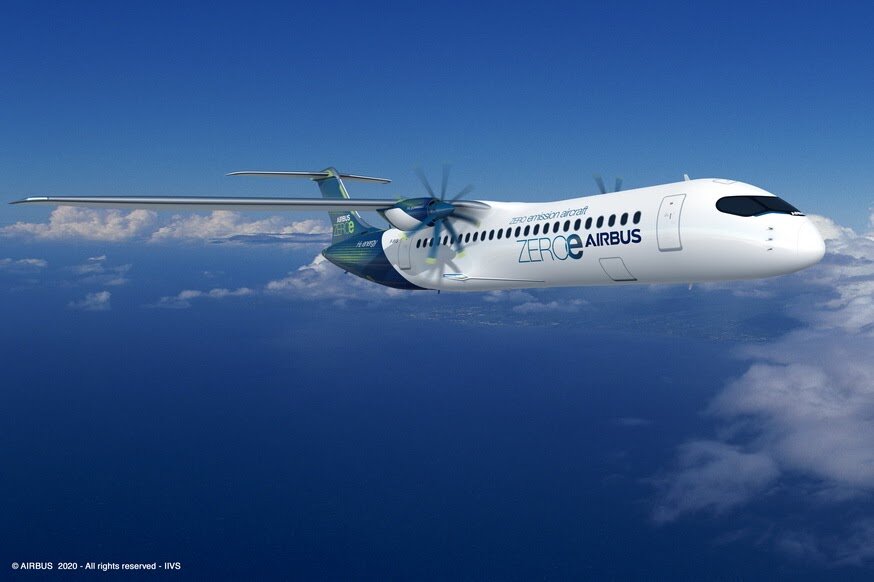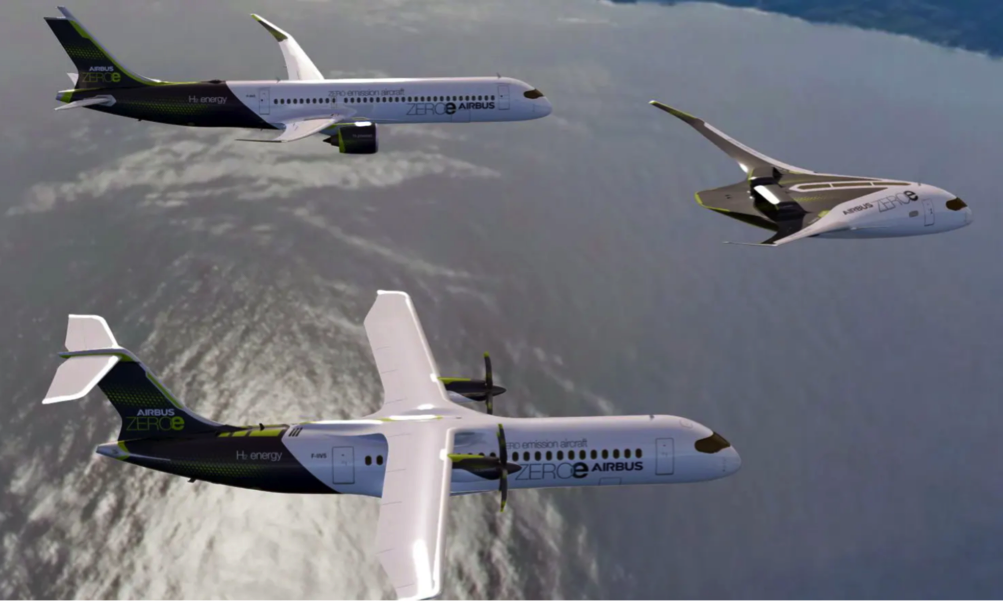Aviation firm: Airbus announces three different concepts that run on hydrogen with aim of taking to the skies by 2035. The three concepts – all codenamed “ZEROe” would be the first climate neutral zero-emission commercial aircrafts. Here their details:

ZEROe 1
A turbofan design (120-200 passengers) with a range of 2,000+ nautical miles, capable of operating transcontinentally and powered by a modified gas-turbine engine running on hydrogen, rather than jet fuel, through combustion. The liquid hydrogen will be stored and distributed via tanks located behind the rear pressure bulkhead.

ZEROe 2
A turboprop design (up to 100 passengers) using a turboprop engine instead of a turbofan and also powered by hydrogen combustion in modified gas-turbine engines, which would be capable of traveling more than 1,000 nautical miles, making it a perfect option for short-haul trips.

ZEROe3
A “blended-wing body” design (up to 200 passengers) concept in which the wings merge with the main body of the aircraft with a range similar to that of the turbofan concept. The exceptionally wide fuselage opens up multiple options for hydrogen storage and distribution, and for cabin layout.
COP26 arrived in Private Jets
“This is a historic moment for the commercial aviation sector as a whole and we intend to play a leading role in the most important transition this industry has ever seen. The concepts we unveil today offer the world a glimpse of our ambition to drive a bold vision for the future of zero-emission flight, I strongly believe that the use of hydrogen – both in synthetic fuels and as a primary power source for commercial aircraft – has the potential to significantly reduce aviation’s climate impact.” — Guillaume Faury, Airbus CEO
 All three of the aircraft concepts rely on hydrogen as its fuel because the only emissions produced when burned is water vapour, making it a clean fuel option for heavy vehicles such as planes, trains and trucks.
All three of the aircraft concepts rely on hydrogen as its fuel because the only emissions produced when burned is water vapour, making it a clean fuel option for heavy vehicles such as planes, trains and trucks.Hydrogen can be made by splitting water into hydrogen and oxygen particles using an electrolyser machine powered by renewable electricity, or even nuclear energy. But it can also be made from fossil fuel gas in a process that releases carbon dioxide into the atmosphere, meaning it would not be a clean energy source without using carbon capture technology during the process.
Thus, the company stresses the importance of lowering the cost of renewable energy for aviation to run fully on “green hydrogen” and have the smallest carbon footprint possible.
Can this dream become a reality or is it too good to be true? We think heavy subsidies will have to ensue…
Sources: The Guardian & Airbus













